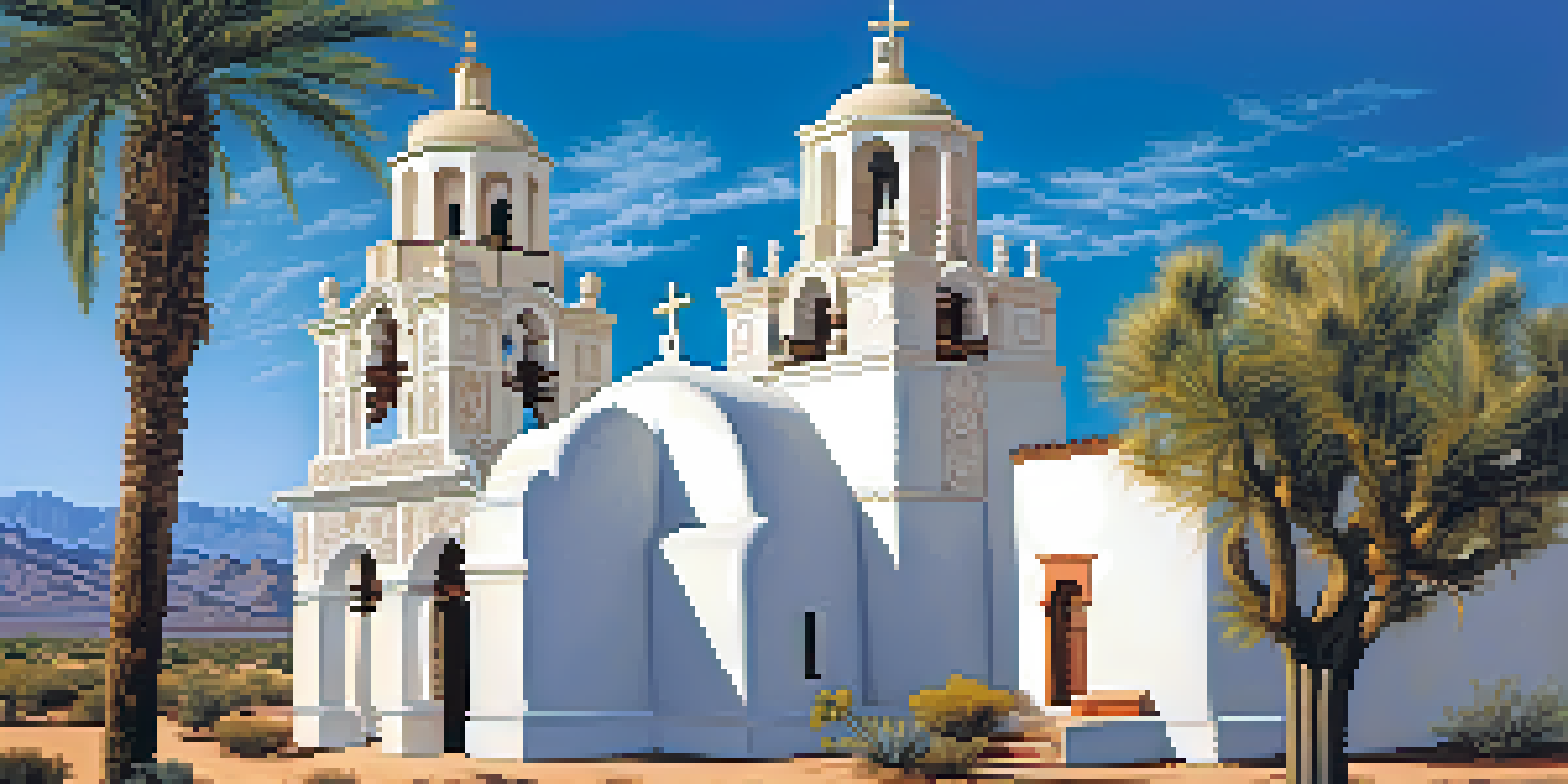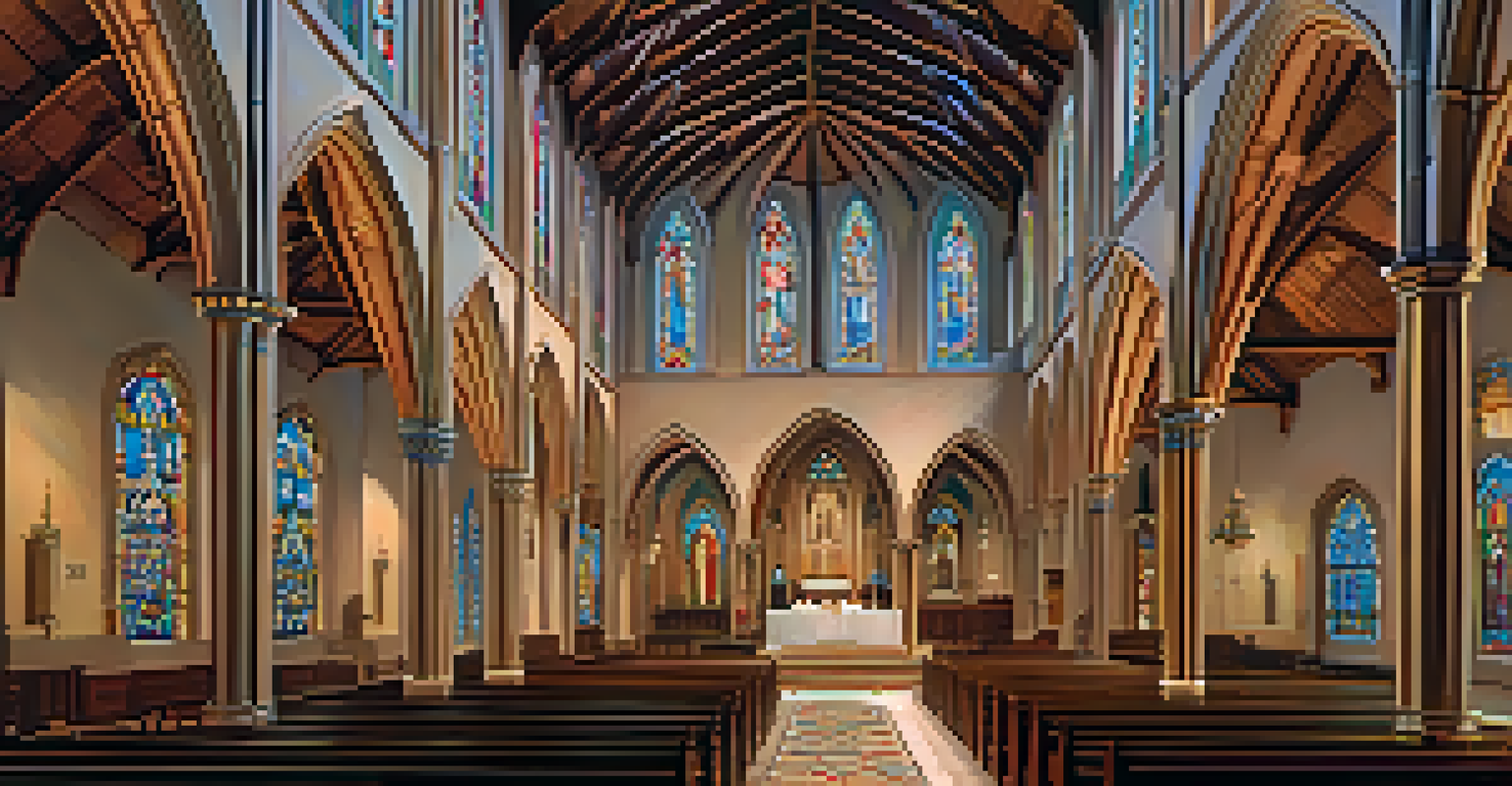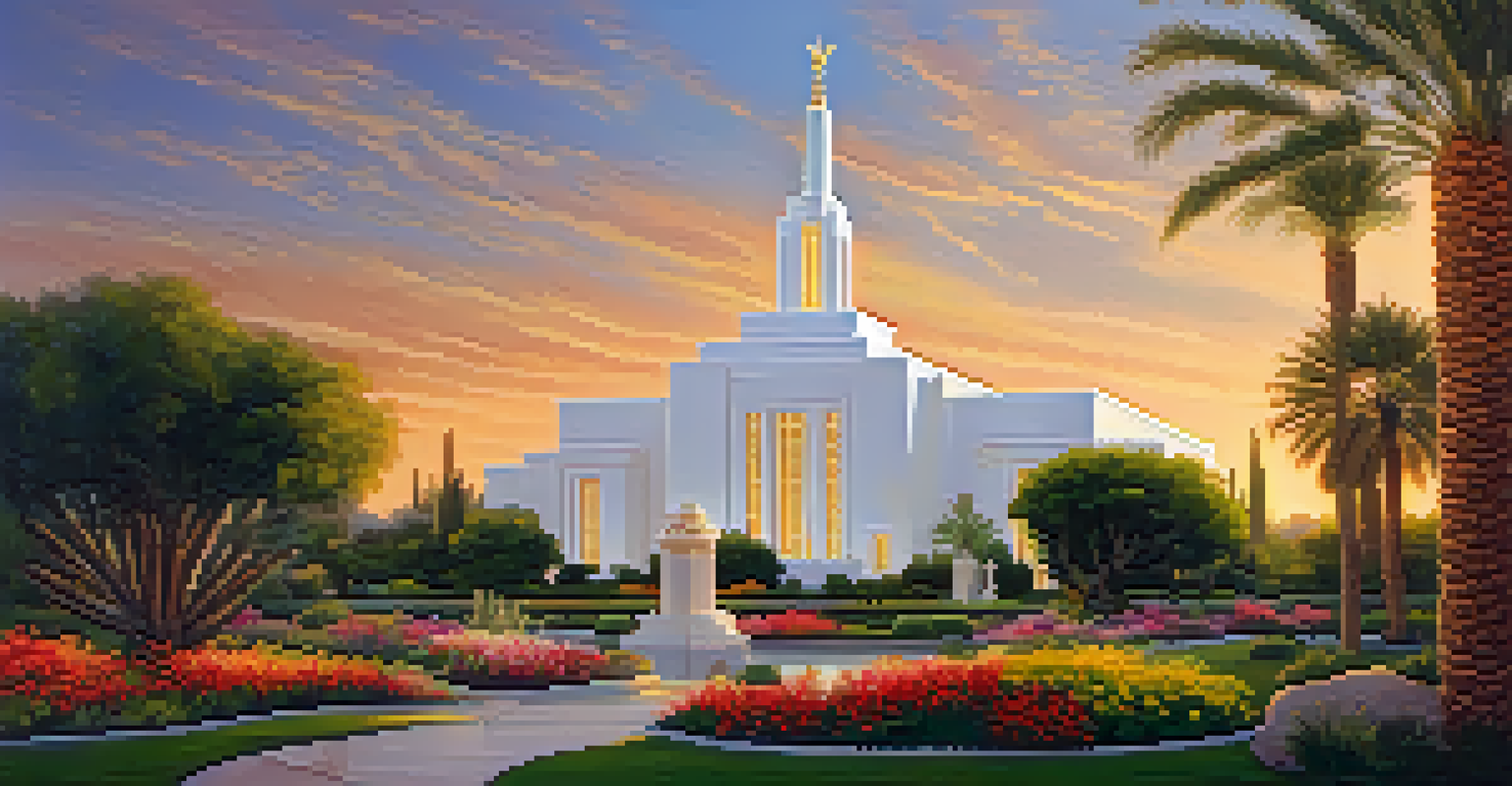Arizona's Historic Churches: A Journey Through Time

The Spiritual Roots of Arizona: A Historical Overview
Arizona's historic churches are more than just buildings; they are the spiritual roots of the communities they serve. From the early Spanish missions to today's diverse congregations, these churches tell a story of faith, resilience, and cultural blending. Each structure reflects the architectural styles and religious practices of the time, creating a fascinating tapestry of history.
Churches are not just places of worship; they are the heart of the community, where history, culture, and faith intersect.
The journey begins in the 18th century when Spanish missionaries established the first churches in the region. These missions were crucial for evangelizing Native American populations and spreading Christianity. The unique blend of Native American and Spanish influences still resonates in many of Arizona's historic churches today, making them significant cultural landmarks.
As communities grew, so did the variety of religious practices. Churches began to emerge from various denominations, each adding to the rich narrative of Arizona's spiritual landscape. Today, these historic churches not only serve as places of worship but also as museums and venues for cultural events, bridging the past with the present.
Mission San Xavier del Bac: A Jewel of the Southwest
One of the most iconic churches in Arizona is the Mission San Xavier del Bac, often referred to as the 'White Dove of the Desert.' Founded in 1700, this mission is a stunning example of Spanish Colonial architecture, adorned with intricate carvings and vibrant frescoes. Its striking white façade stands out against the backdrop of the Sonoran Desert, drawing visitors from near and far.

The mission was established by the Jesuit missionaries and has played a crucial role in the local community for centuries. Not only is it a spiritual center, but it also serves as a gathering place for cultural events and celebrations, bringing together people of all backgrounds. The enduring beauty and historical significance of San Xavier del Bac make it a must-visit for anyone interested in Arizona's heritage.
Historic Churches: Arizona's Soul
Arizona's historic churches reflect the state's rich spiritual roots and cultural diversity, serving as vital community centers.
Restoration efforts over the years have helped preserve this architectural gem, ensuring that future generations can appreciate its beauty and history. Visitors often leave with a sense of connection to the past, feeling the weight of history in the air as they explore its hallowed halls.
St. Augustine Cathedral: A Beacon of Faith in Tucson
Located in the heart of Tucson, St. Augustine Cathedral stands as a beacon of faith and community. Completed in 1896, the cathedral showcases a blend of Romanesque and Gothic architectural styles, characterized by its impressive bell tower and stunning stained glass windows. This church not only serves the Catholic community but also acts as a landmark for the city, symbolizing hope and resilience.
The preservation of our historic churches is not merely about maintaining structures; it is about safeguarding the stories and traditions that define us.
St. Augustine Cathedral has witnessed significant events in Tucson's history, from the early days of settlement to modern-day celebrations and memorials. Its interior, richly adorned with religious art and symbols, invites visitors to reflect on their own spiritual journeys. The cathedral's vibrant community life is evident through regular services, educational programs, and outreach efforts.
In addition to its religious functions, the cathedral hosts concerts and cultural events, making it a vibrant hub of activity. The blend of faith and community engagement ensures that St. Augustine Cathedral remains a vital part of Tucson's identity, connecting the past with the present.
The Legacy of the Mormon Temple in Mesa
The Mesa Arizona Temple, completed in 1927, is a stunning example of early 20th-century religious architecture. As the first temple built by The Church of Jesus Christ of Latter-day Saints in Arizona, it reflects the faith and determination of the Mormon settlers in the region. Its beautiful gardens and striking white exterior make it a serene place for worship and reflection.
This temple has played a significant role in the growth of the Mormon community in Mesa and beyond. It not only serves as a place of worship but also as a center for community gatherings and cultural events. The temple's design incorporates elements of local history, making it a meaningful landmark for both members and visitors alike.
Preservation is Key for Heritage
Efforts to preserve Arizona's historic churches are essential for maintaining their physical integrity and the cultural stories they embody.
Over the years, the Mesa Arizona Temple has undergone renovations to preserve its beauty and ensure it meets the needs of a growing congregation. Today, it stands as a testament to the enduring faith of its members and a symbol of the Mormon heritage in Arizona.
The Historic St. Mary's Basilica: A Cultural Icon
St. Mary's Basilica in Phoenix is a historic landmark that showcases the rich religious and cultural heritage of the area. Established in 1881, it is one of the oldest churches in Arizona and is known for its stunning architecture and vibrant community. The basilica's façade features beautiful stained glass and intricate carvings, inviting visitors to explore its artistic treasures.
As a center of worship for the Catholic community, St. Mary's Basilica has played a vital role in the spiritual lives of many Arizonans. The church hosts numerous events, including weddings, baptisms, and festivals, fostering a sense of belonging among its parishioners. Its deep-rooted traditions and community involvement make it a cornerstone of Phoenix's cultural landscape.
The basilica's commitment to social justice and outreach programs exemplifies its dedication to serving the community. By addressing the needs of those less fortunate, St. Mary's Basilica continues to be a powerful force for positive change in the Phoenix area, ensuring its legacy for generations to come.
Exploring the Historic Churches of Flagstaff
Flagstaff is home to several historic churches that reflect the diverse religious landscape of the region. One standout is the historic First Congregational Church, built in 1896, which boasts beautiful wooden architecture and a welcoming atmosphere. This church has served as a gathering place for the community, playing a role in social activism and local events over the years.
Another notable site is the Church of the Nativity, a charming Episcopal church known for its beautiful stained glass and warm community spirit. Both churches not only provide spiritual guidance but also foster connections among community members, making Flagstaff a vibrant place for faith and fellowship.
Native American Churches' Significance
Native American churches in Arizona blend traditional beliefs with Christianity, acting as vital hubs for cultural preservation and community support.
Visitors to Flagstaff can explore these historic churches, each offering a unique glimpse into the city's past and present. Whether attending a service or participating in community events, the churches serve as a reminder of the enduring importance of faith and community in everyday life.
The Role of Native American Churches in Arizona's History
Native American churches in Arizona hold a unique and significant place in the state's religious history. These churches often blend traditional beliefs with Christian practices, creating a rich tapestry of spirituality. They serve as vital community centers for Native American populations, offering spiritual guidance, cultural preservation, and social support.
One notable example is the San Carlos Apache Mission, which has been instrumental in preserving the traditions and heritage of the Apache people. The mission not only provides a place for worship but also serves as a hub for cultural activities, ensuring that the community's history and values are passed down through generations.

The importance of these churches extends beyond their religious functions; they are places of healing, education, and empowerment. As Arizona continues to grow and change, the contributions of Native American churches remind us of the rich cultural heritage that shapes the state's identity.
Preserving Arizona's Historic Churches for Future Generations
As we explore Arizona's historic churches, the importance of preservation becomes evident. Many of these structures face challenges due to aging, environmental factors, and changing community dynamics. Preservation efforts are crucial not only for maintaining the physical buildings but also for ensuring that the stories and traditions they represent endure.
Community engagement plays a vital role in these preservation efforts. Local organizations and congregations often rally together to raise funds, organize restoration projects, and create awareness about the significance of these historic sites. By involving the community, these initiatives foster a sense of ownership and pride in the cultural heritage of Arizona.
Looking ahead, it is essential to continue advocating for the preservation of these historic churches. By recognizing their value, we can ensure that future generations have the opportunity to experience the rich history and spiritual significance that these structures embody, keeping the stories of Arizona alive.